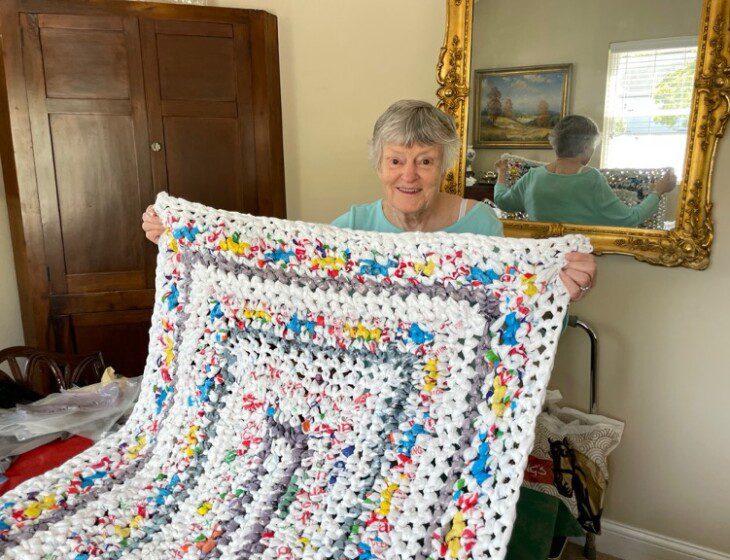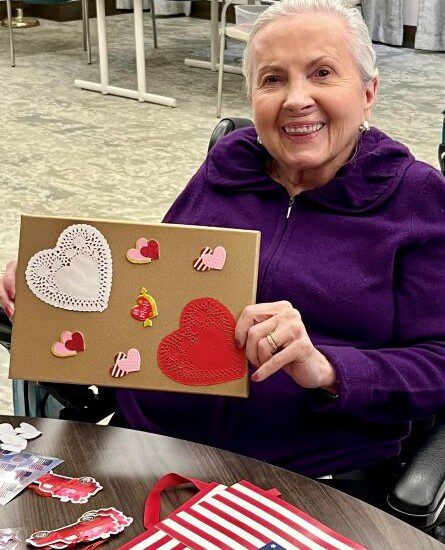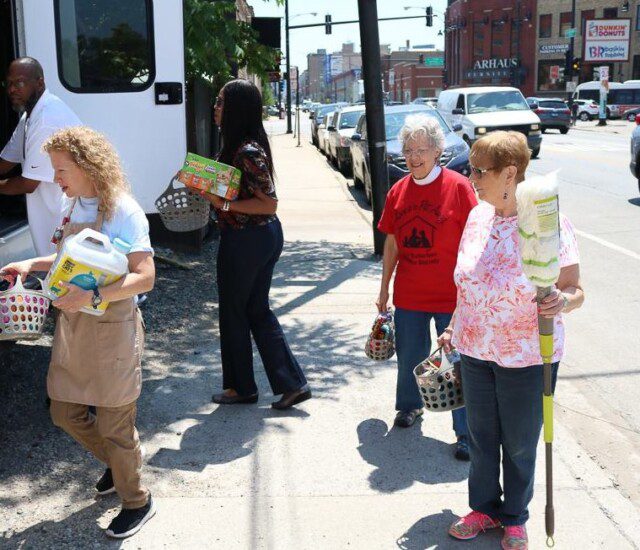One man’s trash is another man’s treasure…and recyclable trash takes this proverb to a higher level.
The residents of Oak Trace senior living community in Downers Grove have adopted the practice of recycling plastic grocery bags, crafting them into sleeping mats providing padding and repelling moisture for people who are homeless.
The program, called New Life for Old Bags, came to Oak Trace in 2013. Ken Webster, the senior living community’s bus driver, heard about the initiative on Moody Radio. “I thought it sounded interesting and like something we could bring to Oak Trace,” he recalled. “It is a worthwhile project, and I knew a lot of the residents like to do needle crafts, so I suggested it.” It was a suggestion that was enthusiastically received, and ten years later, the project is still going strong. Participants meet weekly at Oak Trace to work on mats and visit with their friends.
The process of creating New Life For Old Bags includes collecting plastic grocery bags and cutting them into strips to create ‘plarn’ (plastic yarn). This is then crocheted into 3’x 6’ sleeping mats. It’s estimated that, 500-700 bags are used to create each mat.
The process formerly took as many as 80 hours per mat. Webster got the idea to create a board that simplified the step of cutting the bags. “Prior to making this piece, we had to cut each individual bag four times. With this, we can do 15 bags at a time by stacking them up.” This step, he said, ‘cut’ the production time significantly.
Libby Bolton started volunteering with New Life for Old Bags at Oak Trace from the very beginning. “It was a fun gathering together, talking and working,” the long-time resident said. She initially started with the task of sorting bags and then eventually learned from one of the other volunteers how to crochet. Because she likes certain colors and is determined to integrate patterns into the mats, other participants will offer her specific bags she may want. The finished products, she said, are “attractive, cushy and water resistant.”
The New Life for Old Bags volunteers at Oak Trace are predominantly but not exclusively female. Bob Neder has been participating for four years. “All I do is the cutting. I’m a specialist,” he said.
Wayne Wheatley, who has lived at Oak Trace for six years, said that courtesy of his grandmother’s tutelage, he’s been crocheting for 68 years. He was quick to sign on with New Life for Old Bags when he learned about it. “When I first moved into Oak Trace, I attended an activities fair and saw what they were doing with New Life for Old Bags. I told the ladies, ‘I can crochet,’ and they said, ‘no, you cannot’. So I showed them,” he said.” It’s a nice pastime. I work on them at the weekly meeting, and back in my apartment too. I can watch TV while I’m crocheting.”
Webster used to deliver Oak Trace’s mats to a church in Chicago for distribution to homeless people. Now he takes them across the street from Oak Trace to Downers Grove Community Church. “They take hot meals to tent camps in the city, so they take the mats with them.”
Webster added, “From what I understand, many recipients say that the mat they receive is the first thing they’ve ever gotten that was made for them. That makes it more meaningful—that someone took the time to do something for them when generally, they’re forgotten.”
“We are so thrilled that our team members found this idea and our residents jumped behind it with such enthusiasm. Showing compassion for those less fortunate is part of the magic at Oak Trace. This is a story that needs to be told and heard!” said Dan Harrington, executive director.


